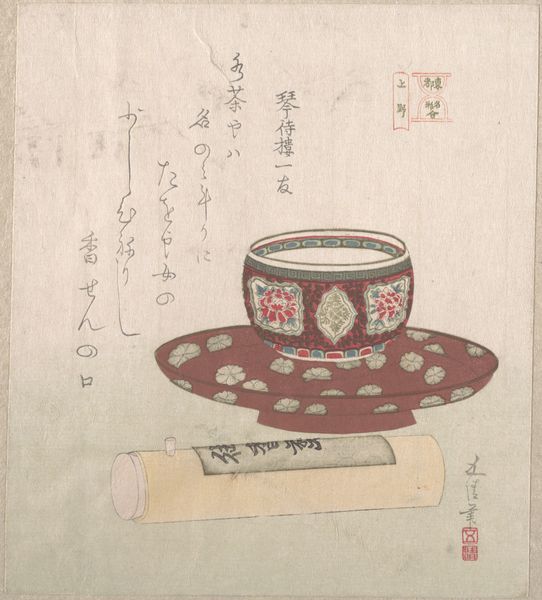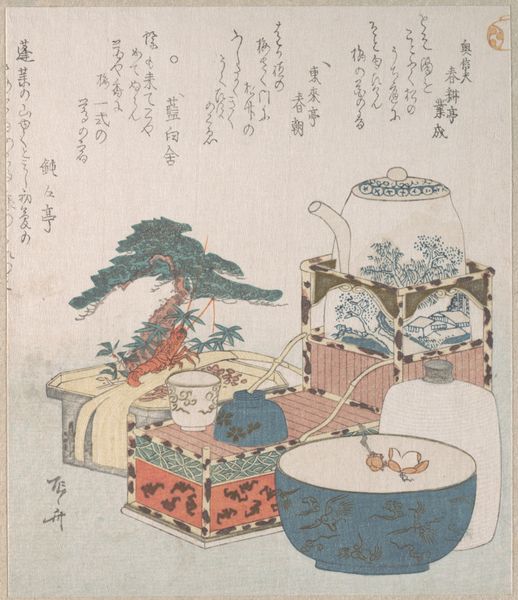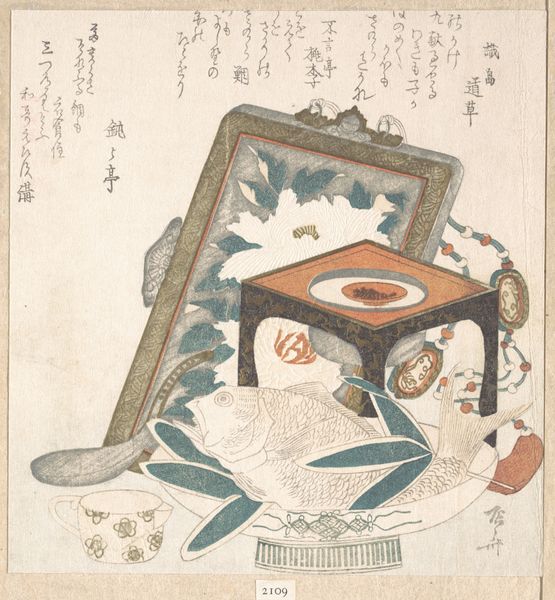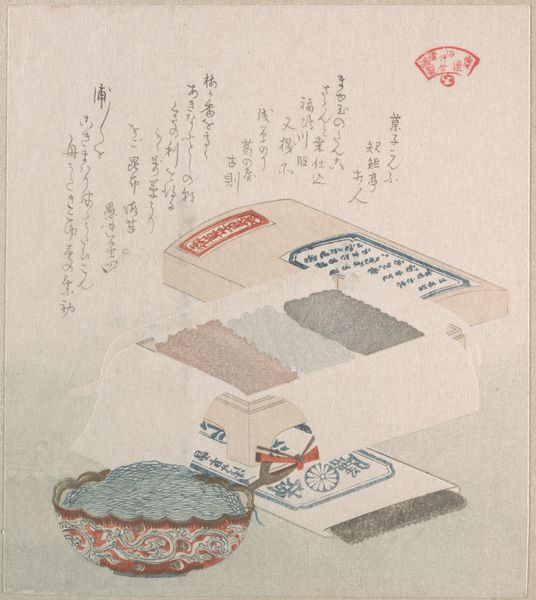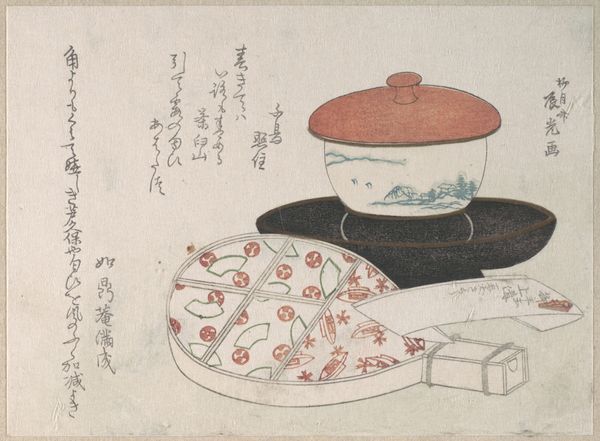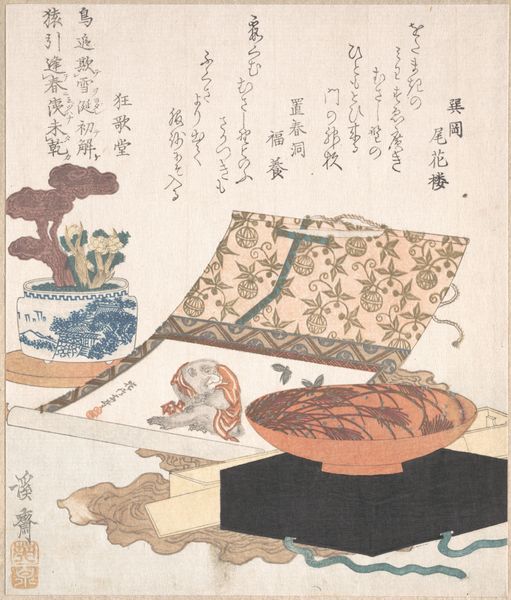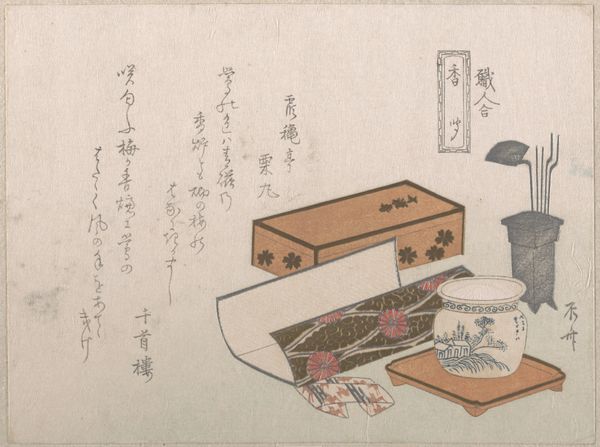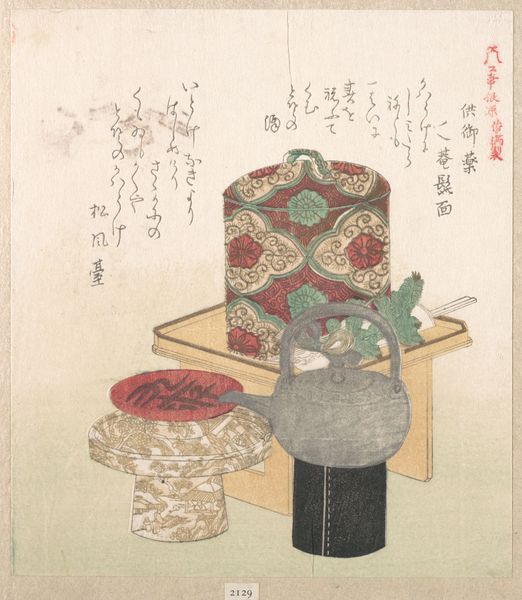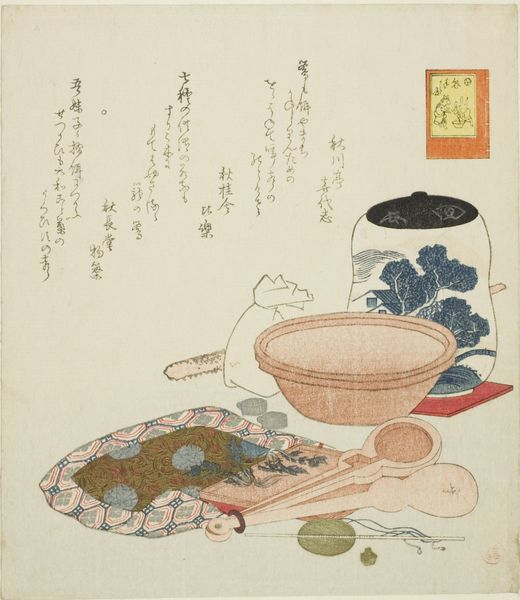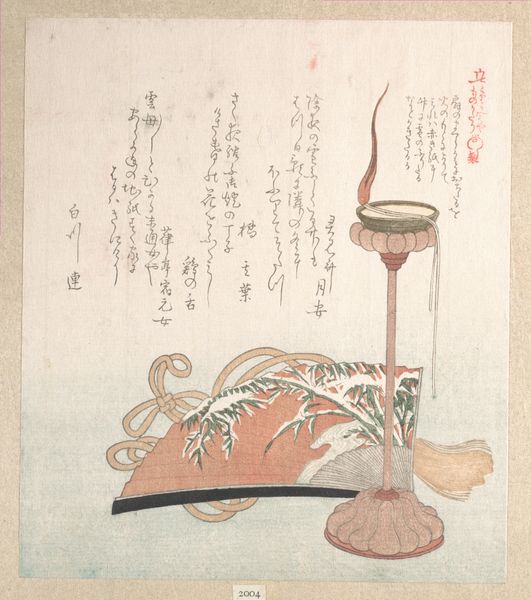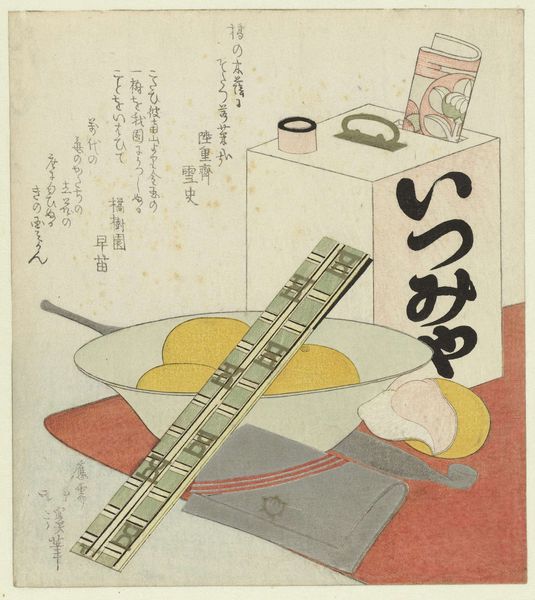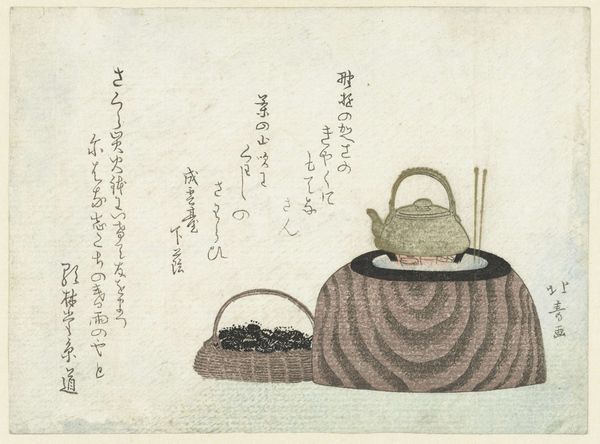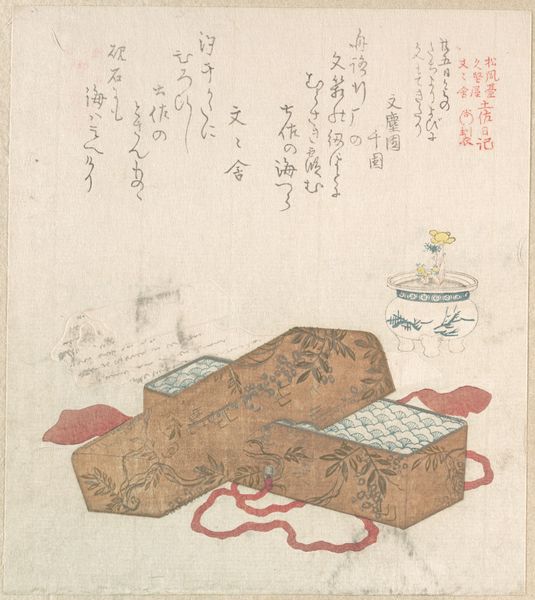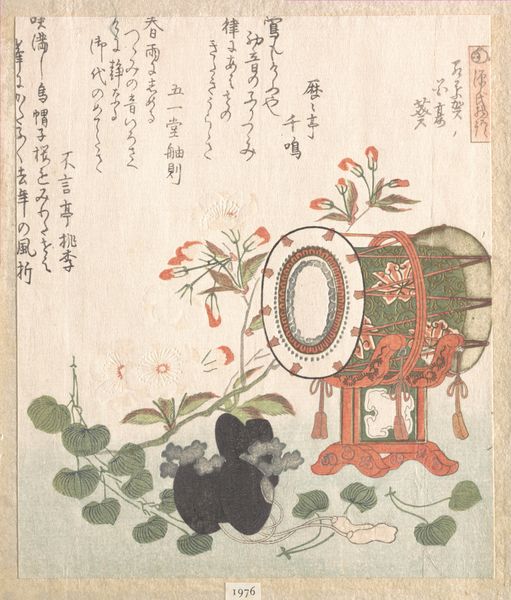
print, woodblock-print
# print
#
asian-art
#
ukiyo-e
#
figuration
#
woodblock-print
#
line
Copyright: Public domain
Curator: Let's take a closer look at "Tea Things," a captivating woodblock print by Toyota Hokkei, whose exact creation date remains a mystery to us. At first glance, what are your immediate thoughts? Editor: My initial reaction is to its simplicity and understated elegance. The careful arrangement of everyday items—a tea bowl, chopsticks, and what appears to be a lacquer tray—hints at a particular kind of lived experience, doesn't it? A close-up look reveals that these aren’t just simple items for basic needs, but they are high end versions crafted from costly and precious materials like lacquer. Curator: Indeed! Ukiyo-e, the style and the artistic context it was part of, elevates these very details and finds spiritual meaning and even enlightenment within these ordinary scenes. The image on the jar depicts folklore scenes rendered in this very delicate fashion as well. Hokkei, known for his meticulous style, uses delicate lines to describe scenes that seem simple but are loaded with cultural significance. Take, for instance, the characters depicted on the ceramic container – they carry the emotional and psychological memory of Japan. Editor: And I can't help but focus on the woodblock printing technique itself. Consider the labor involved: carving the individual blocks, applying the ink, and the precision needed to align the colors for each impression. It's a process deeply rooted in craft and manual skill, reminding us that artistic expression often relies on collaborative processes between artisans, printing blocks, and, as is evidenced, by its lack of creation date, often divorced from time altogether. Curator: Absolutely. There's a strong argument to be made for seeing Ukiyo-e as more than just pretty pictures. They served as chronicles of their era, imbuing even basic things like a teacup with significant status and providing the modern viewer today, access to the cultural history of consumption that informs our era still. Editor: Considering both of our perspectives, Hokkei offers not just an artwork but an exploration of objects of material production within their social world. The symbols speak and the objects testify. Curator: Precisely! And from the woodblock process to the quiet dignity imbued in a simple teacup, the past speaks to the present here so clearly.
Comments
No comments
Be the first to comment and join the conversation on the ultimate creative platform.
